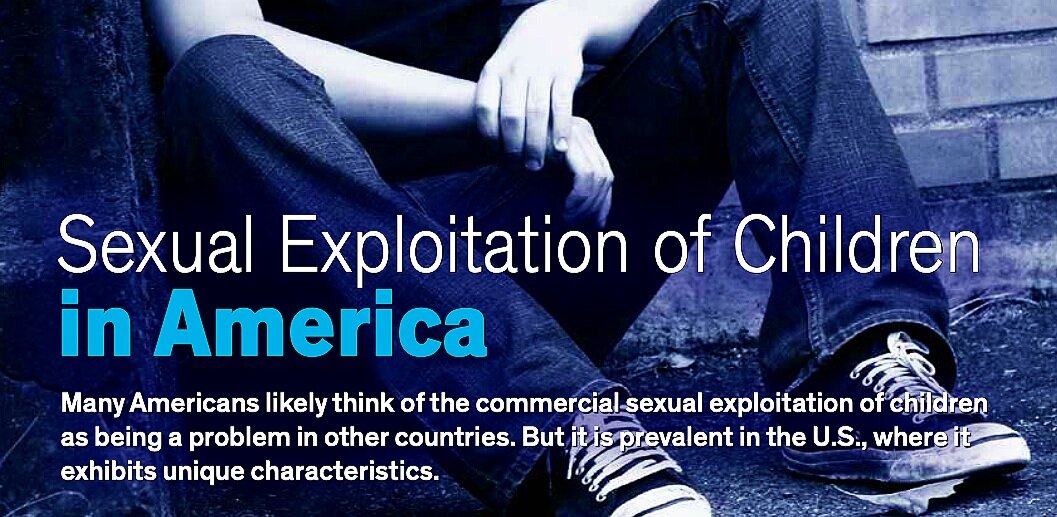Sexual Exploitation of Children in America
AFFIRMATIONS Spring 2019
A publication of the Jane Addams College of Social Work, University of Illinois at Chicago
Any person below the age of 18 who is in prostitution or the sex trade is automatically considered a victim of human trafficking, according to both international and U.S. federal law. “It does not even need to entail movement across national or state borders,” says Charles Hounmenou, Assistant Professor at Jane Addams College of Social Work. “It can affect any group in society; rich people or various marginalized populations. But children are disproportionately affected, children are the most vulnerable.”
Hounmenou is an internationally recognized authority on human trafficking. He notes that the extent of commercial sexual exploitation of children (CSEC) is difficult to determine for a number of reasons, including widely differing figures, lack of comprehensive research, and because CSEC is defined in very different ways. What is known, however, is that two out of seven missing children end up in CSEC, and 75 percent of those were in child welfare when they ran away. “The child welfare system is a bridge to CSEC in every state,” says Hounmenou. “Most kids in child welfare are from poor families and have experienced abuse. Pimps know that kids in group homes are vulnerable and actively recruit them.” He is quick to point out that this is not an indictment of the child welfare system. “It is a reflection of the lack of trained staff and resources to support these young people,” he says. “When kids don’t get the services they need, they eventually run away and are likely to end up working for a pimp.”
Assistant Professor Charles E. Hounmenou, PhD
According to Hounmenou, 75 percent of children in prostitution in the U.S. are under the control of a pimp. “Working for a pimp is akin to slavery, so they experience more trauma and have greater mental health needs. Trauma-informed services become much more important,“ he says.
Some may be surprised to learn that more than 70 percent of child sex trafficking victims in the U.S. are citizens, born in this country. Also potentially surprising, a number of studies have shown that about half of young people in CSEC are boys, and often LGBTQ+. A study conducted in Chicago found that 47 percent of child sex trafficking victims were male, 41 percent female, and 12 percent transgender. Additionally, boys are rarely rescued as victims of sex trafficking. “But this may be because boys tend to work independently on the streets, working for basic necessities like food or clothing,” says Hounmenou. “Girls are more likely to end up under the control of a pimp, working for money.”
Hounmenou has done much research into the characteristics of human trafficking and sexual exploitation in West Africa, and is continuing that work in Chicago. In his current project, Commercial Sexual Exploitation of Children in Chicago: Identification, Needs Assessment and Service Access, he plans to interview young people who are involved in CSEC.
“I think there is a mismatch between what these kids need and what service providers are offering them,” he says. “I want to hear from these youth what their needs are and what services they think would help them, or about their experiences with law enforcement. I want to give these kids a voice.”

